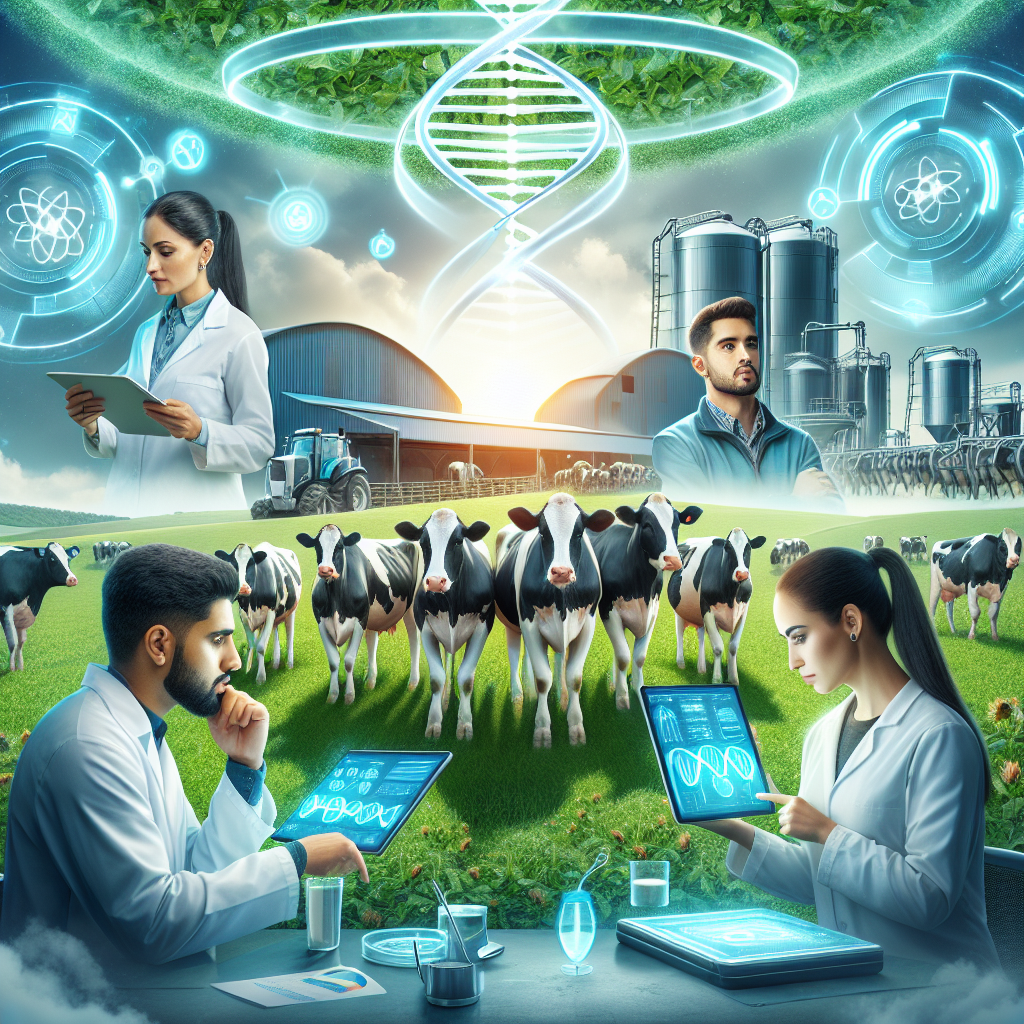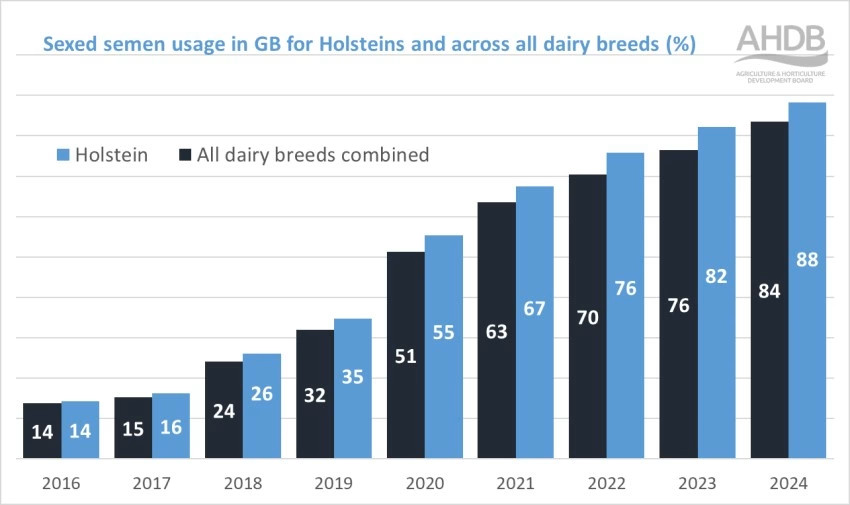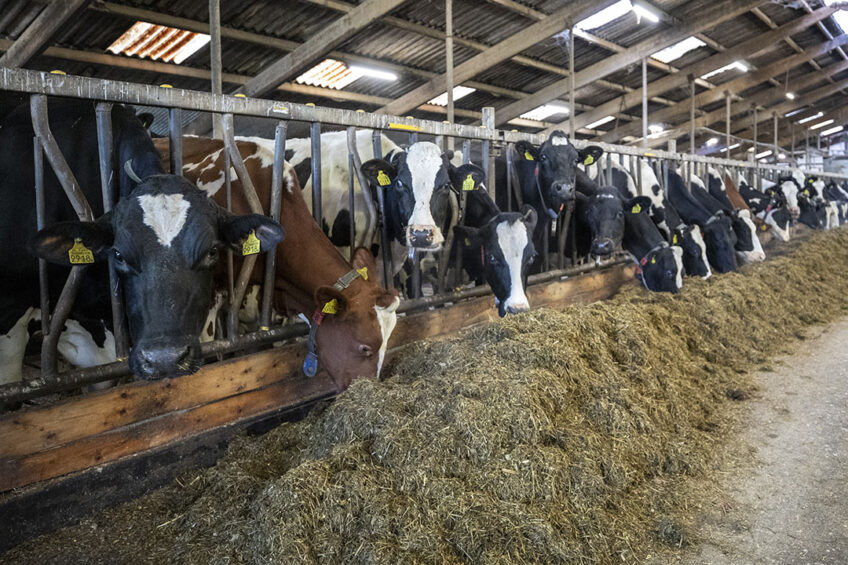Learn how health trends, product science, and technology can transform dairy farming and increase your profits. Ready to innovate and grow?
Staying ahead in a continuously changing sector is not only desirable; it is also necessary for existence. Today’s keywords include health, product science, and technology. These aspects are more than just trends; they represent the foundation of future dairy innovation and sales success. Innovation is critical to being relevant and thriving in the ever-changing dairy farming industry. Let’s explore how prioritizing health and well-being, using advanced product science, and implementing cutting-edge technology may transform your operations. More importantly, we’ll share honest insights and concrete suggestions to help you keep up with the market and lead the way, increasing your sales and market competitiveness.
The Health and Wellness Revolution
It is no surprise that today’s customers are more health-conscious than ever. As people become more aware of the advantages of healthy eating, the demand for nutritious dairy products is increasing significantly. People want palatable milk with nutrients, probiotics, and organic certificates. In fact, according to a recent market research analysis, the health-focused dairy industry is expected to increase at an impressive 6.5% per year over the next five years.
So, how can dairy producers capitalize on the current surge in consumer demand? The answer lies in adopting creative approaches that enhance the nutritional profile of their products. For instance, some farmers incorporate specific probiotic strains into their milk production process, such as Lactobacillus acidophilus or Bifidobacterium lactis, known for improving consumers’ gut health. Others invest in specific organic farming practices, like rotational grazing or composting, to ensure their milk is free from industrial chemicals and antibiotics. These specific innovative approaches meet consumer demands and inspire a new wave of dairy production.
Clement Gervais, a forward-thinking DFA farmer-owner from Vermont, is taking part in an experiment with Agolin to minimize carbon emissions from cows using an essential oil feed additive. “We’re seeing healthier cows with better feed efficiency,” Gervais joyfully states. This benefits both sustainability and the production of better milk.
Furthermore, industry leaders such as Scott Vieth, a renowned dairy farmer from Texas with over 20 years of experience, are making progress with sustainable solutions. Vieth developed a dung scraper and separator system to repurpose composted manure as bedding for cows, resulting in better living conditions and healthier animals. When implemented by experienced and respected figures like Vieth, these techniques improve both animal welfare and dairy quality, setting a benchmark for the industry.
As more consumers show interest in the origins of their food, farmer-led storytelling is emerging as a powerful tool. By sharing their success stories and the visible benefits of their innovative techniques, farmers can strengthen their relationships with clients and increase sales. It’s not just about making money; it’s about building a sustainable future where health and well-being drive the business forward. This approach empowers farmers and fosters a sense of connection with their customers.
Product Science: The Backbone of Innovation
Product science is critical in the continually expanding dairy farming industry. But what precisely does the term “product science” entail in this context? It means using scientific concepts and procedures to create and enhance dairy products. This includes nutritional profiling, taste improvement, texture alteration, and shelf life extension.
Recent advances in dairy product creation are nothing short of revolutionary. Consider the advent of lactose-free milk and dairy substitutes to meet the increased demand from lactose-intolerant customers. And then there’s precision fermentation technology, a game-changer that allows for producing high-quality dairy proteins without the need for conventional cattle rearing. This technology opens up a world of possibilities. It underscores the potential for a more sustainable and forward-thinking dairy industry.
Investing in product science provides various advantages to dairy producers. Increased product quality and diversity match customer needs, increasing market pricing. Farmers may improve productivity and sustainability by incorporating scientific knowledge into their agricultural methods. This, in turn, may lead to less waste and fewer environmental consequences, benefiting producers and consumers. This potential for increased market pricing and improved productivity should inspire hope and motivation in dairy farmers.
Consider the popularity of Greek yogurt, which has surged due to technological advances in fermenting techniques. Another prominent example is the introduction of high-protein dairy products targeted at fitness enthusiasts, which has established a new market niche and fueled sales growth. This potential for increased sales growth should motivate and inspire dairy farmers to embrace product science and technology.
Adopting product science enables dairy farmers to continually innovate, adapt to changing customer demands, and maintain their enterprises in a competitive market. The future of dairy farming depends on efficiently leveraging these scientific advances.
Tech-Driven Dairy: The Future is Now!
Consider a future in which every component of dairy production is optimized for optimum efficiency and profitability. Thanks to cutting-edge technology, this is not a faraway fantasy; it is occurring now.
Automation, artificial intelligence, and data analytics are changing dairy production. Automated milking systems, for example, minimize labor expenses while improving cow health by maintaining constant milking schedules. This technology allows farmers to concentrate on more important responsibilities, such as animal care and business management.
Artificial intelligence (AI) is another major changer. AI systems can anticipate anything from milk yields to disease outbreaks, allowing farmers to make more educated choices. For example, sensors installed on cows can check their health in real-time. These sensors gather information on characteristics such as heart rate, temperature, and activity levels. These are then evaluated to identify early indications of sickness. This preventive technique may help farmers save money on veterinary fees while increasing overall herd production.
Data analytics takes it one step further. Comprehensive data systems enable farmers to monitor every aspect of their operations, from feed efficiency to water use. Farmers may use this data to detect patterns and trends, allowing them to make better business choices. According to research published in the Journal of Dairy Science, farms that used predictive data analytics increased milk output by up to 20% [Journal of Dairy Science].
So, what is preventing you from embracing these disruptive technologies? The future of dairy farming is here, and it is more efficient, lucrative, and sustainable than ever before.
Drive Your Dairy Farm Forward: Embrace Health, Science, and Technology for Success
The dairy sector is undergoing a paradigm transformation driven by health and wellness trends, scientific advances, and ground-breaking innovations. Did you know that customer demand for health-conscious dairy products is increasing? Organic milk sales and other organic dairy products have increased by more than 6% yearly [Statista]. This increase mirrors a more significant consumer trend toward healthier lives, emphasizing the potential benefits for dairy producers who can accommodate these changing demands.
The advantages of technology are just as compelling. Consider automated milking systems as one example. Farmers using modern milking methods may increase production by up to 30%. Furthermore, feed optimization software may improve feed efficiency, increasing net earnings by up to 15%. These numbers demonstrate the significant economic advantages of technological breakthroughs beyond improving milk supply.
Farmers like AJ De Jager in Colorado have already taken advantage of these changes. He promotes sustainability by feeding his herd recycled food like carrots and sugar beets and using low-cost nutrition alternatives. Other farmers like Scott Vieth in Texas have reaped economic gains from technology, such as dung scrapers and separators. These methods enable the recycling of composted manure, which may be used as cow bedding or sold as fertilizer, resulting in extra income streams.
The message is clear:
- Aligning with health and wellness trends.
- Utilizing product research.
- Implementing new technologies fulfills customer wants while driving significant economic rewards.
Are you prepared to innovate and take your dairy farm into the future?
Optimize Every Facet: Beyond Just Producing More Milk
Increasing dairy income involves producing more milk and maximizing every aspect of your farm. Combining health, product science, and cutting-edge technology can improve your cows’ health while reaping considerable financial benefits.
- A Holistic Approach to Health.
Consider this: healthy cows are more productive cows. Improving the living conditions of your herd might result in better milk output. Clement Gervais, a DFA farmer in Vermont, has seen results from employing Agolin’s feed additive to lower his cows’ carbon emissions. Healthier cows result in lower vet expenditures and more milk output, paving the way for enhanced income. - Leveraging Product Science
Product science is the foundation of dairy innovation. For example, Scott Vieth in Texas set up a manure scraper and separator to recycle composted manure. This resulted in lower bedding costs and an extra income stream from selling compost as fertilizer. These product science-based innovations enhance efficiency and provide new revenue streams. - Accepting Technology
We have reached an age in which technology has the potential to revolutionize dairy production fundamentally. AJ De Jager in Colorado has embraced recycled food as cow fodder, lowering feed costs while maintaining high output levels. Advanced technology, such as water recycling systems, saves resources and reduces operating costs, enabling farmers to reinvest the savings in other farm innovations. - Financial Benefits
Integrating health, science, and technology into your dairy business provides significant financial benefits. Healthier cows result in more output and lower medical expenditures. Science-based innovations increase efficiency and provide new income streams, while technology lowers operating costs and resource usage. - Real-world examples of Increased Profit
A lack of connectivity between these components might restrict your farm’s potential. However, following the example of farmers such as Gervais, Vieth, and De Jager demonstrates the concrete advantages. Gervais’ approach to essential oils in feed has decreased emissions and increased cow health, Vieth’s manure recycling system has lowered expenses and generated new income, and De Jager’s sustainable feeding methods have kept feed prices low while increasing output.
Integrating these ideas significantly improves your farm’s profitability and sustainability. Are you prepared to transform your dairy farm?
Challenges on the Path to Innovation: Overcoming Hurdles in the Dairy Industry
Embracing innovative health practices, cutting-edge technology, and unique product science is unquestionably exciting but also presents obstacles. So, what are the probable obstacles, and how can you overcome them?
Initial Costs and Investment: One of the most pressing problems for dairy producers is the initial expense of implementing new technology and procedures. The cost impact may be significant, from acquiring new equipment to altering old infrastructure.
Solution: Consider making minor, gradual modifications instead of beginning from scratch. Seek government grants, subsidies, or financial aid programs to encourage sustainable agricultural techniques. For example, platforms such as the USDA’s Environmental Quality Incentives Program (EQIP) provide financial assistance to promote the implementation of improved management techniques.
Learning Curve: New technologies and scientific advances sometimes include a steep learning curve. The time and effort necessary to acquaint yourself and your employees with these new technologies might be overwhelming.
Solution: Invest in training courses and seminars, whether online or in person. Many technology suppliers incorporate thorough training courses into their service offerings. Furthermore, connecting with other farmers who have successfully adopted comparable technologies may provide vital peer support and personal knowledge.
Human nature often resists change, mainly when long-held traditions are firmly established. Your team may be concerned about changing long-standing routines and rituals.
Solution: Involve your employees in the decision-making process from the outset. Educate stakeholders on the advantages of these advances for profitability, animal welfare, and environmental sustainability. Transparency and inclusion may greatly minimize opposition.
Infrastructure compatibility is a typical concern when implementing new developments on farms. Retrofits may be complex, and in some instances, activities must be temporarily halted, which can affect production.
Solution: Before deploying any new facility, do a complete feasibility analysis. Many organizations provide scalable solutions, allowing you to adjust the technology to your needs and progressively grow as necessary. Consultation with industry professionals may give tailored suggestions to help reduce interruptions.
Addressing these issues and planning ahead of time will help reduce possible bottlenecks and promote a more adaptable and forward-thinking agricultural environment. Every obstacle is a chance for progress, and adopting these ideas may eventually lead to a more sustainable and lucrative dairy enterprise.
Thinking Ahead: The Future of Dairy Farming
Looking forward, it’s evident that dairy farming is poised to undergo significant changes. So, what upcoming trends and technologies should you watch to remain ahead of the curve?
First and foremost, artificial intelligence (AI) and machine learning are expected to play critical roles. Consider using predictive algorithms to identify ideal feeding periods or early indicators of sickness in your herd. These technologies have the potential to significantly increase animal production and health.
But it does not end there. The Internet of Things (IoT) enables real-time monitoring systems that provide detailed information on anything from milk output to cow behavior. You may soon operate your whole business from your smartphone, making changes on the fly based on data analytics.
Sustainable methods should be seen as becoming more integrated. Water recycling and manure management methods are essential for addressing climate change. Farmers in Texas, for example, are ahead of the game by reusing composted manure for various purposes.
Precision agriculture has the potential to make a significant impact. GIS mapping and soil sensors may provide exact information to improve crop yields and benefit your herd’s nutrition.
Another intriguing trend is the development of lab-grown milk products. Consider supplementing your standard offers with laboratory-derived alternatives. This might provide new cash sources while appealing to environmentally concerned customers.
Finally, improving animal welfare will remain a priority. After all, healthier cows provide more productive results. Look for novel feed additives or wearable technology for cows, such as activity trackers, to keep them in peak health.
Staying ahead of the curve requires dairy farmers to be ready to embrace the future and adopt this innovative technology and methods. This ensures survival and success in an ever-changing sector.
The Bottom Line
As we look forward to the future of dairy farming, the intersection of health and wellness, product science, and cutting-edge technology will serve as the foundation for industry transformation. Improving cow welfare, harnessing scientific developments, and incorporating technological solutions are no longer optional; they are required for success in a more competitive and environmentally sensitive market.
Consider this: Are you ready to embrace these advancements and propel your dairy business to unparalleled levels of development and efficiency? The future of dairy farming depends on our capacity to remain knowledgeable, adaptive, and aggressive in implementing new methods. This ensures revenue while contributing to a more sustainable and responsible food production system.
Keeping ahead requires keeping interested and devoted. Let us all work together to innovate for a successful future.
Key Takeaways:
- Dairy farmers should leverage health and wellness trends to drive growth.
- Innovations in product science are crucial for industry advancement.
- Embracing technology can significantly enhance dairy farming efficiency.
- Overcoming industry challenges requires strategic planning and adaptability.
- Environmental sustainability is a growing concern among consumers and must be prioritized.
- Effective storytelling can bridge the gap between farmers and consumers.
Summary:
As the dairy industry evolves, combining health and wellness trends, cutting-edge product science, and advanced technology sets the stage for significant innovation and sales growth. Are you keeping up with these transformative changes, or are you at risk of being left behind? This article explores how these three pivotal forces reshape dairy farming, offering insights to help you adapt and thrive in this dynamic landscape. There’s much to cover, from wellness-driven product development to tech advancements improving dairy farm operations. Stay with us as we dive into the future of dairy farming.
Learn more:
- The Future of Dairy Farming: Insights for US and Canadian Farmers!
- Embracing the Future: The Latest Innovations in Dairy Technology and their Impact on the Industry
- Harnessing Technology, Tools, and Innovative Practices to Empower Dairy Farmers
 Join the Revolution!
Join the Revolution!
Bullvine Daily is your essential e-zine for staying ahead in the dairy industry. With over 30,000 subscribers, we bring you the week’s top news, helping you manage tasks efficiently. Stay informed about milk production, tech adoption, and more, so you can concentrate on your dairy operations.







 Join the Revolution!
Join the Revolution!






